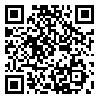
 1, Tayebeh Jamand2
1, Tayebeh Jamand2 
 , Nasrin Zahmatkeshan3
, Nasrin Zahmatkeshan3 
 , Razeah Bagherzadeh4
, Razeah Bagherzadeh4 
 , Kamran Mirzaei5
, Kamran Mirzaei5 
 , Tayebeh Gharibi4
, Tayebeh Gharibi4 
 , Mohammad reza Yazdankhah2
, Mohammad reza Yazdankhah2 
 , Farahnaz Kamali4
, Farahnaz Kamali4 
 , Rozita Khoramroodi4
, Rozita Khoramroodi4 
 , Shahnaz Pouladi2
, Shahnaz Pouladi2 

2- Nursing department ,School of nursing and midwifery, Boushehr university of medical sciences, Boushehr, IRAN
3- Nursing department ,School of nursing and midwifery, Yasuj university of medical sciences, Yasuj, IRAN
4- Midwifery department, School of nursing and midwifery, Bushehr university of medical sciences, Bushehr, IRAN
5- Department of community medicine, School of medicine, Bushehr university of medical sciences, Bushehr, IRAN
Background: The world health organization in 2001 established the policy that neonates must be exclusively breastfed for six months ,but studies have shown that fewer women upper than three months to give their babies milk. Although, education and management for a logical continuation of breast feeding is crucial. The present study compared the effectiveness of multimedia and routine educations on exclusive breast feeding in children less than six months of exclusive breast feeding was done.
Materials and Methods: In this experimental study, 169 Gravid 1 women covered by health care systems were chosen via random sampling casually in the control and case groups (77 and 92 individuals, respectively). The intervention group completed 32 weeks of gestation to 6 months after delivery through the implementation of multimedia training programs about breast feeding (slide, educational videos, lecturing and pamphlets) were used for training and advice. While the control group was taught by conventional health centers (providing user instruction). Information required by valid and reliable questionnaires were collected. The data collected by SPSS 11.5 software using descriptive statistics (mean, SD)and analytical statistics (mann Whitney and χ2) were analyzed. In all cases p<0.05 was considered significant.
Results: The results showed in no significant differences between the two groups in terms of duration of exclusive breast feeding in follow up visits. But in the intervention group, breast feeding difficulties such as insufficient milk, filled milky, wrong position and breast problems such as breast sore and mastitis were significantly reduced compared to the control group (p<0.001).
Conclusion: Education provided by health centers in Bushehr as well as multimedia training on exclusive breast feeding was effective however, multimedia education in reducing common problems of breast feeding educationis preferred which is better for health centers to train more emphasis on correction position for breast feeding.
Received: 2013/06/8 | Accepted: 2014/02/1 | Published: 2014/12/18
| Rights and Permissions | |
 |
This work is licensed under a Creative Commons Attribution-NonCommercial 4.0 International License. |
